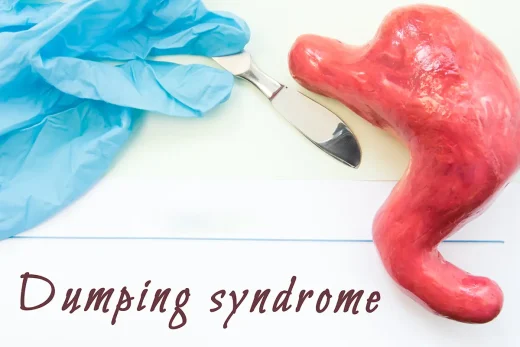Dumping syndrome, which can be seen in people who take excessively simple carbohydrates or who have gastrointestinal and esophageal surgery, can manifest itself with nausea, diarrhea and fatigue shortly after eating. This disease, which can be resolved by both proper nutrition and surgical means, significantly affects the quality of life if the right treatment planning is not made.
What is dumping syndrome?
Dumping syndrome definition is especially wondered by patients who will undergo stomach operation. Because there is a possibility of experiencing this syndrome after stomach surgeries. Dumping is a problem characterized by palpitations, sweating, weakness, and fatigue caused by rapid gastric emptying after gastric bypass surgeries.
Causes
This health problem often manifests itself with the initiation of food intake following surgical interventions on the stomach. Especially after the surgeries within the scope of obesity surgery; It can be seen after major surgical procedures for organic causes such as stomach cancer. However, there is a risk that patients will experience this syndrome after the operations in which the entire stomach is removed. Although the dumping syndrome causes are generally limited to these, it is a disorder that can heal on its own.
Dumping syndrome symptoms
Symptoms of dumping can be divided into those that occur at an early return after eating or in a later period. Early symptoms are those that appear within 10 to 30 minutes of eating. After 10-30 minutes after eating, people have abdominal pains, cramps and diarrhea. Symptoms of late-stage dumping appear within 1 to 3 hours of eating.
It occurs especially if you eat a diet rich in table sugar, or fruit sugar. Usually, early dumping syndrome is self-limiting and resolves within 7 to 12 weeks. It is possible to list the symptoms as follows:
- Feeling bloated or too full after eating
- Nausea
- Dizziness, lightheadedness
- Rapid heart rate
- Vomiting
- Abdominal cramps
- Diarrhea
- Flushing
Sometimes late dumping syndrome occurs. Again, symptoms begin 1 to three hours after eating a meal with a very high sugar content. Symptoms appear long after eating. That’s because the body secretes a high amount of insulin to absorb the sugar that goes into the small intestine. The result is low blood sugar. The symptoms of late dumping are:
- Sweating
- Flushing
- Rapid heart rate
- Dizziness, lightheadedness
- Weakness
Dumping syndrome after gastric sleeve

It which may occur after surgeries or gastric bypass operation in which part or all of the stomach is removed, can be defined as a symptom characterized by very rapid emptying of the stomach. The syndrome that occurs due to this cause is also referred to as gastrc dumping, dumping sleeve or dumping bypass.
This disease after gastric bypass surgery is characterized by the pouring of food directly from the stomach into the small intestine without being digested. There are 2 types of it: early dumping and late dumping. Early dumping syndrome occurs 10 to 30 minutes after eating. Late dumping occurs 1 to 3 hours after eating.
Non surgical dumping syndrome
Patients usually conduct research on ‘early non surgical dymping syndrome’. It occurs generally after bariatric operations. ın addition this, it is also known that patients mainly research ‘dumping syndrome diabetes, dumping syndrome hypoglycemia and gastroparesis’ on the internet. However, it is not related to diabetes and gastric paralysis. If these diseases exist, this problem may be more severe.
Dumping syndrome without surgery can also be seen in healthy people very rarely. It can occur as a psychologically based disorder in people who are trying very hard to lose weight.
Dumping syndrome treatment
Since it is basically a complication caused by anatomical mechanisms, lifestyle changes are recommended first in treatment. In cases where such changes are insufficient, medical and surgical treatments are used. The following measures are effective in controlling the symptoms of this syndrome:
- You need to eat frequently and little to no food instead of the main meal three times a day.
- Swallow food by chewing well.
- Avoid the consumption of foods high in carbohydrates such as sugar, cake, white bread, pasta, carbonated drinks.
- Focus on the consumption of protein-heavy foods such as chicken and fish.
- Consume plenty of pulpy, fibrous foods such as vegetables such as broccoli and corn.
- Do not drink too much fluid 30 minutes before and after meals.
How do you get rid of it?
You can easily prevent this health problem by changing your dietary habits. However, if you have very severe symptoms, medication may be required for this. You can also prevent dumping syndrome complications with early treatment.
Dumping syndrome diet:
- Eat smaller meals more frequently.
- Avoid simple carbohydrates, sugars and milk products.
- Lie down on your back for 30 minutes after eating.
- Don’t drink fluids within 30 minutes before or after eating.